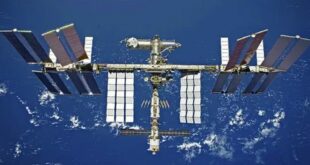
As the Asian Century takes on an interstellar dimension, who will write the rules of the road? Rajeswari Rajagopalan writes that space will likely be no exception to Asia’s great power rivalries.
The outer space environment has undergone significant changes in the last decade. Countries in Asia, Latin America and Africa are driving many of these changes. Nevertheless, there are differences in the storylines of these regions as far as their space programs are concerned.
Asia presents a mixed story. While many countries approach space activities in the context of climate change and natural calamities, there are also countries looking at space with an excessive focus on national security. This is not the case in Africa and Latin America, where space programs almost have a total focus on social and development aspects.
Space programs in the Asian and Indo-Pacific region are dominated by three established spacefaring powers – China, India and Japan – and several emerging players, including Australia, Bangladesh, Indonesia, Iran, Israel, Malaysia, North Korea, Pakistan, Singapore, South Korea, the United Arab Emirates, and Vietnam.
Six of the ten countries that have demonstrated independent launch capabilities are in Asia – China, India, Iran, Israel, Japan and North Korea – a fact that demonstrates the increasing proficiency of the space programs in the region. The key question is whether this increasing Asian proficiency in outer space will lead to more cooperation or competition. Also of interest will be how the established and emerging spacefaring nations in Asia will contribute to the global governance of outer space.
There are currently two regional space cooperation organisations – the Asia-Pacific Regional Space Agency Forum (APRSAF) promoted by Japan, and the Asia-Pacific Space Cooperation Organization (APSCO) under China’s leadership. The very existence of two regional space organisations indicates the sharp divisions at play in the Asian context. At the same time, there is no institutional mechanism to coordinate between these two regional initiatives.
APRSAF, APSCO, and the major players in the region must find a way to cooperate in a couple of different areas. One area is climate change and related environmental issues – here countries could find ways to cut costs on key technologies as a parameter for collaboration.
A second, pertinent area for Asian countries to come together would be in writing the rules of the road for space, whether through legally binding rules or through normative instruments. Given the contentious nature of major power relationships in Asia, it appears unlikely that space will emerge as a platform for cooperation among all the major Asian spacefaring powers. Instead, it is possible that the divide will only get deeper, with one set of countries led by China and a second one led by Japan and India.
Unfortunately, this is likely to be the case because the underlying disagreements are quite deep-rooted. While all the major Asian powers acknowledge that space should be used only for peaceful purposes, the growing gap between the rhetoric and reality on the ground is stunning.
Space’s Military Future
China’s anti-satellite test in 2007 is a case in point. The 2007 test, as well as the ones that were conducted subsequently under the garb of missile defence tests, have created new debates in countries such as India and Japan as to how they must respond in order to protect their own interests in space and create an effective deterrence. Clearly, the geopolitical tensions in the terrestrial world have managed to infect the sanctity of one of the global commons.
China’s longer-term plans for outer space have also raised concerns. China’s human space activities have remained an integral part of its goal to construct and operate a space station in low earth orbit by 2024, by which time it could be the only operating space station. Unless the partners in the International Space Station (ISS) are able to find a financially sustainable option, the ISS could be winding down by this time.
After dismissing the utility of inter-planetary or human spaceflight missions for decades, India has decided to join in too. For years, India had remained hesitant about human spaceflight programs, arguing that there are no major spin-offs in technological terms. The decision by the Indian government in August to have a manned mission by 2022 is a partial reflection of the competition in Asia.
Inter-planetary missions were similarly not a big priority for India, but again New Delhi is mindful of the need to undertake such missions to demonstrate its own advancing space prowess. Such demonstrations have implications for both security and the global commercial space market. A similar trajectory can also be seen in Japan, where a purely civilian space program is shifting gears towards a more military orientation.
China’s Space Goals
The 20th century saw outer space competition play out between the two superpowers of the day, the US and the USSR. Today, space technology and programs are more spread out, with over 60 players including non-state, private commercial players.
While the participation of the private sector in space is still largely a Western phenomenon, there are many private space firms beginning to develop in China, India and Japan as well. The entry of commercial actors has driven innovation, making access to space a lot cheaper and more competitive.
These are important developments, yet what has had the most significant impact in driving space-related competition is the shift in the global balance of power. The international power struggle has had a deleterious impact on the governance of this particular global commons.
The trend towards developing counter-space capabilities is particularly worrying, and it’s a trend that is quite evident in Asia. The fact that Asia has some of the fastest growing economies also means higher military spending, including for military outer-space programs. On top of this, the seemingly unending sovereignty and territorial disputes make it difficult to generate better collaboration on even unrelated issues, such as writing the rules of the road in outer space.
Ultimately, while all powers would possibly benefit from greater cooperation in outer space, the prospects appear dim.
This piece was first published at Policy Forum, Asia and the Pacific’s platform for public policy analysis and opinion. Read the original here: https://www.policyforum.net/asia-space-cooperation-conflict/





